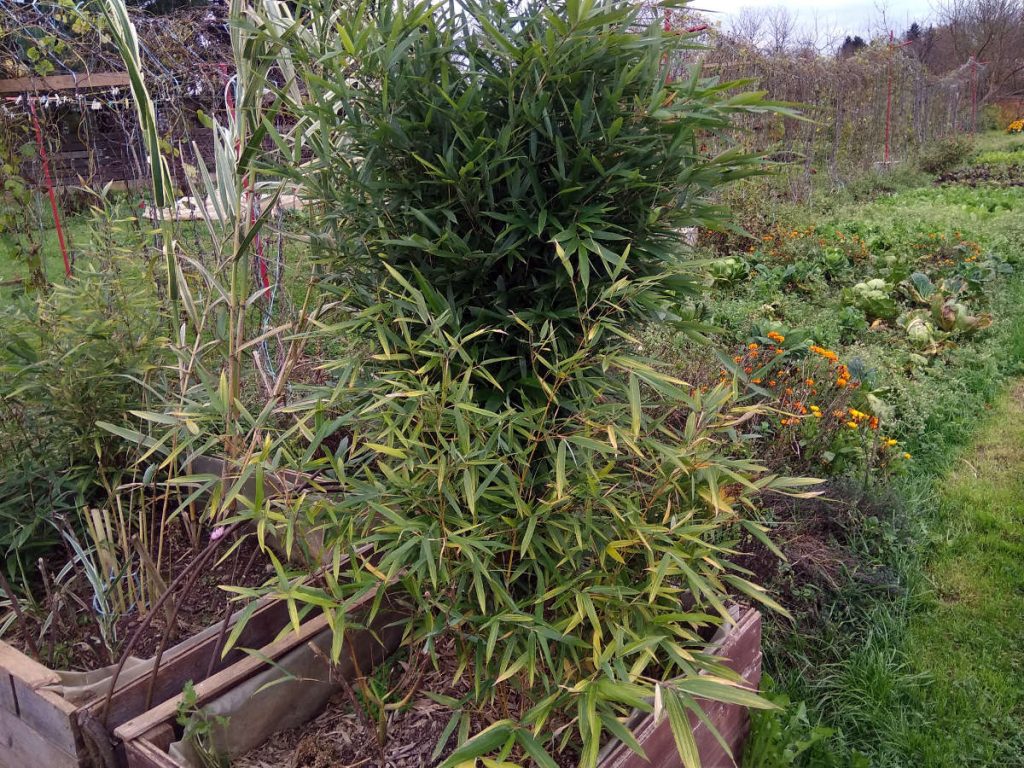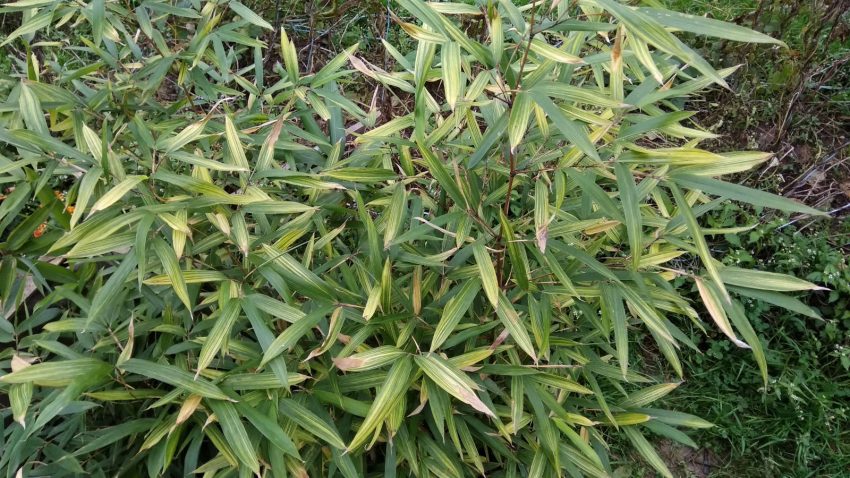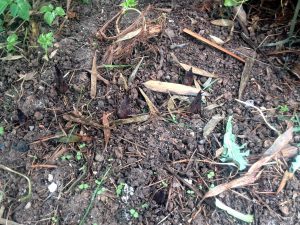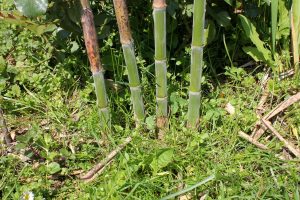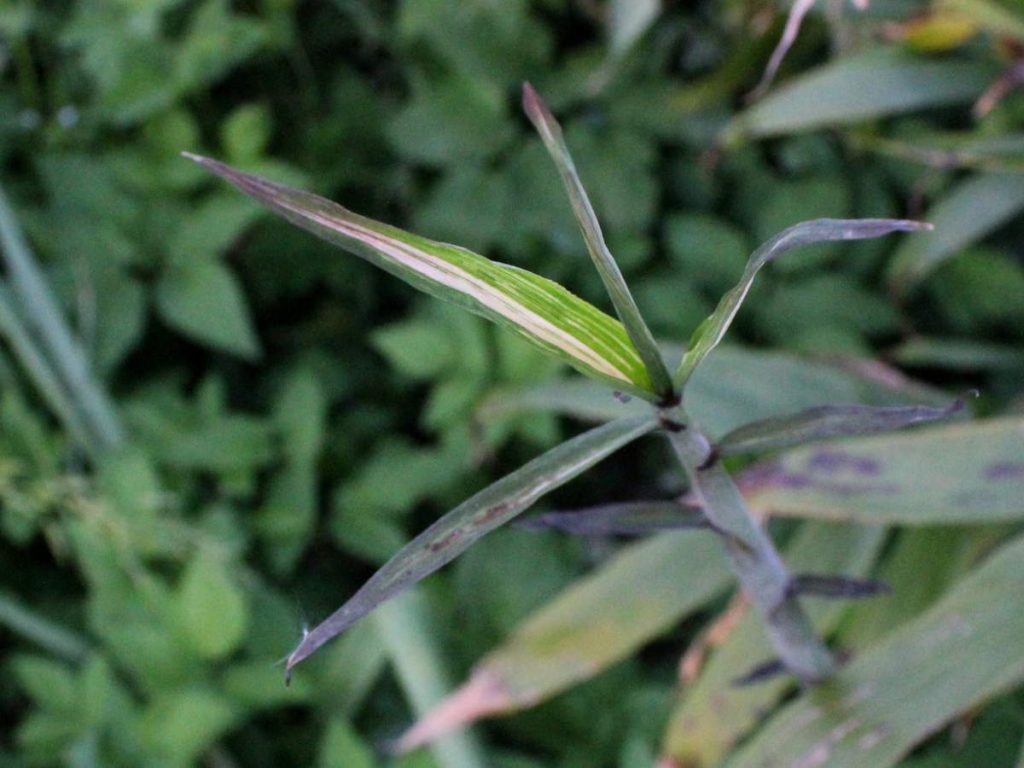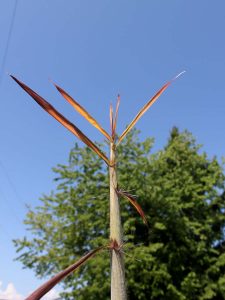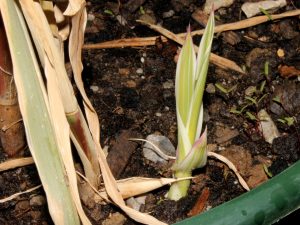Phyllostachys arcana ‘Luteosulcata’ seedling’s autumn transformation
Winter is coming
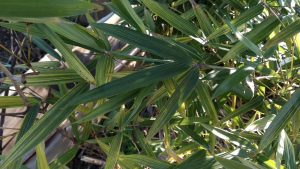
Tonight, we’ve seen snowflakes in the air for the first time this autumn. Before the arrival of winter and bitter below freezing temperatures, bamboos prepare and become hardier which makes them more likely to get through the winter unharmed. With first cold, all Phyllostachys bamboos started shedding some of their leaves to decrease water loss due to transpiration in cooler weather. Leaves also become thicker and coated with waxy protective layer, which also prevents desiccation. The variegated seedlings had a lot of issues early in the growing season, but came out in excellent shape. They lost most of the damaged leaves from early summer and spring and ended up with new, mostly undamaged leaves. Sadly, some kind of fly destroyed most of the growing tips.
color change
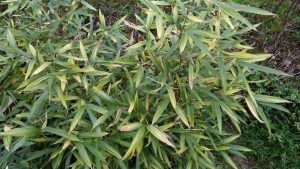
Like expected, based on previous observations, leaves started changing their color in mid summer. First leaves were all completely yellow. Every following leaf got a bit more dark green color in the form of dark green striping. The last leaves that grew just before winter weather kicked in, started to look almost as green as the regular unvariegated seedling form. New leaves are also much less prone to environmental damage and should survive the winter intact. The gradual darkening also appears on the variegated seedlings culms. It seems that usually green variegation forms on sulcus, but can appear on other sides of the internode as well.
Difference between the two seedlings
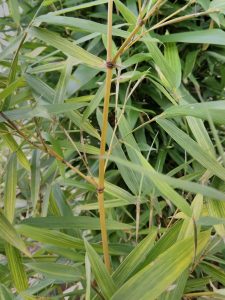
The most apparent difference is the culm color. I wrote about it some time ago and observations only became more evident as the shoots started maturing. The first seedling changed from lime green to bright yellow. There is almost no red tanning, but I expect it to start again in early spring and around shooting. I’m not certain about the amount of culm variegation yet, since both the seedlings are still in young juvenile form. Based on last year’s progress, I expect them to upsize significantly. It should be interesting to see them develop.
Leaves are very similar on both seedlings and have the same type of progressive darkening. First leaves are all lime green or yellow and gradually start darkening. There seems to be a difference in how dark the leaves finally get, but it might be too early to tell for sure. It seems that the first seedling doesn’t get as green as the second one. It was also a little bit less prone to sun damage, which is quite strange, because it’s leaves were just as pale if not paler.
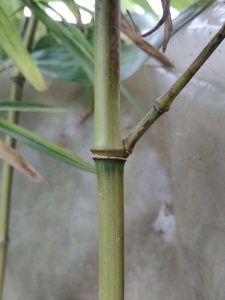
Second seedling has started with bright green culms and dark green striping. Sun tanning was extremely strong during early spring and it turned almost black on sun exposed shoots. With time it started fading to brown color with a hint of red. The lower parts that were not exposed to sun, changed from bright green to olive green color. Variegation of the culm appears on all sides of the culm, but is usually found as darker green sulcus. A lot of internodes have a dark green coloration below the node, some can extend further down as green striping. It is not as evident as green variegations of yellow culmed bamboos like Phyllostachys aureosulcata, at least not yet. Culm color might change a bit as the culms fully mature. Time will tell how they look like when they get there.

